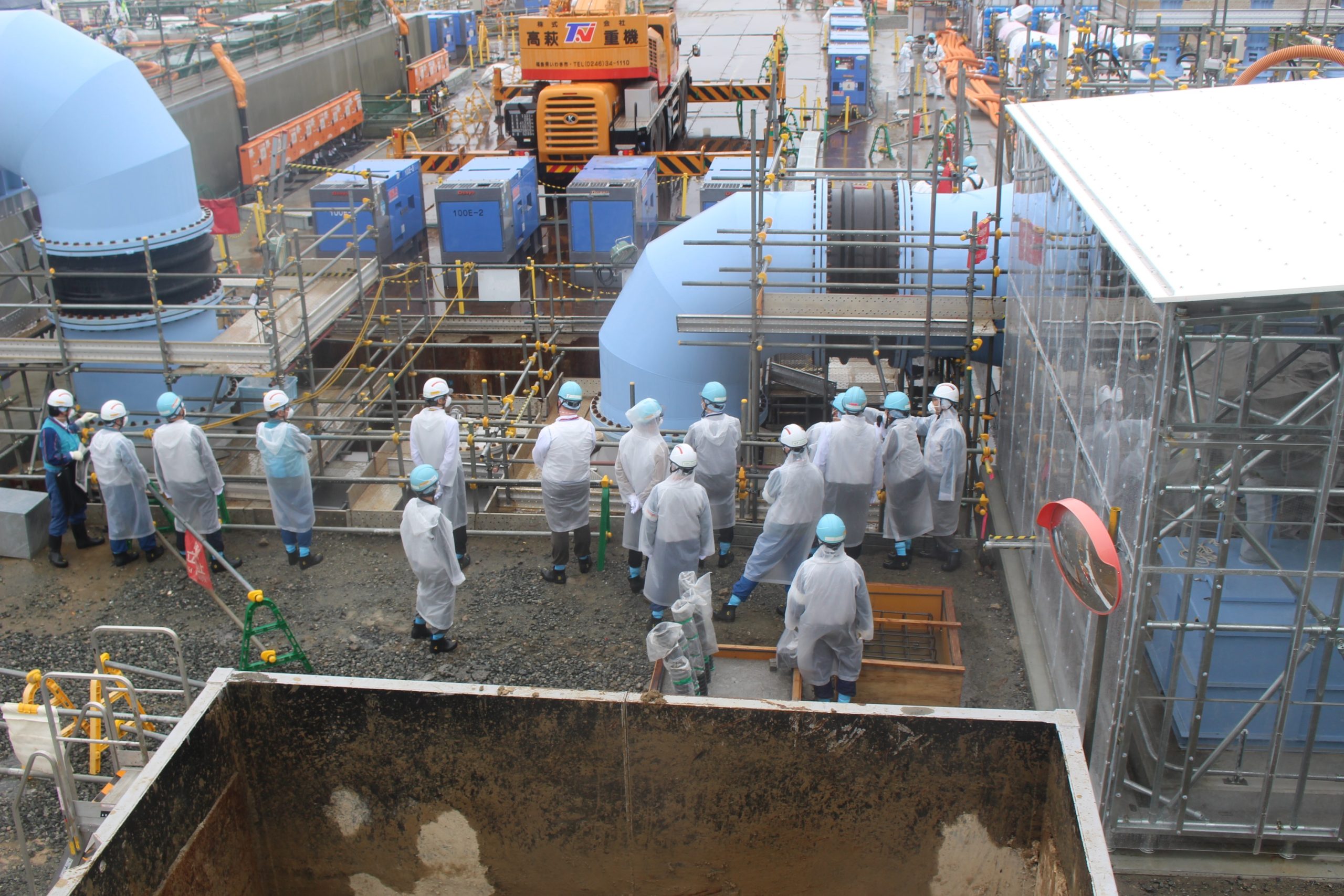All equipment needed for the release into the sea of treated radioactive wastewater from the wrecked Fukushima nuclear plant has been completed and will be ready for a safety inspection by Japanese regulators this week, the plant operator said Monday, as opposition to the plan continues in and outside Japan over safety concerns.
Tokyo Electric Power Company Holdings said it installed the last piece of an undersea tunnel dug to release the water offshore, completing the construction of the necessary equipment that began last August.
A mandatory safety inspection of the equipment will begin Wednesday, said Nuclear Regulation Authority Chairman Shinichi Yamanaka, who visited the Fukushima Daiichi plant last week.
If everything goes well, TEPCO is expected to receive a safety permit for the release about a week after the inspection ends, officials said. Discharge of the treated water is expected to begin this summer, although the exact date has not been set.
The plan has faced fierce protests from local fishing groups concerned about safety and reputational damage. Nearby countries, including South Korea, China and some Pacific Island nations, have also raised safety concerns.
Government and utility officials say the wastewater, currently stored in about a thousand tanks at the plant, must be removed to prevent any accidental leak in case of an earthquake and to make room for the plant’s decommissioning. They say the treated but still slightly radioactive water will be diluted to safe levels and will be released gradually into the ocean over decades, making it harmless to people and marine life.
Some scientists say the impact of long-term, low-dose exposure to radionuclides is unknown and the release should be delayed. Others say the release plan is safe but call for more transparency, including allowing outside scientists to join in sampling and monitoring the release.
Japan has sought support from the International Atomic Energy Agency to gain credibility and ensure that safety measures meet international standards.
The move also came at a time when Japan’s unilateral decision provoked intensified protests from neighbouring countries, Pacific Island communities and civil society groups in the most affected prefectures such as Fukushima, Iwate and Miyagi.
On Monday, the Republic of Korea’s opposition Justice Party held a news conference in front of the Japanese embassy after the party’s floor leader Bae Jin-gyo made a three-day trip to Japan last week, including a visit to the nuclear plant.
Members of the party’s special task force opposing the release met with local civic groups in Japan and held a press conference at TEPCO to deliver their objections, but their letter of complaint to TEPCO was rejected.
Last Thursday, the Japan Fisheries Cooperatives reiterated their opposition to the discharge in a resolution, though the Japanese government proposed a 50 billion yen (US$349 million) package to buy their “understanding”.
“We remain firmly opposed to discharging the water,” the resolution said.
“We are by no means saying it’s OK to discharge the water,” Masanobu Sakamoto, head of the cooperative, said.
Koji Suzuki, head of a fishery company who organiSed the session, said he opposes the plan. Stakeholders in the industry, who continue to wait for an explanation of the release plan, need additional information that can be shared with customers who doubt the safety of seafood.
Also last Thursday, Japan was urged to face up to the legitimate concerns of the international community on the dumping of nuclear-contaminated water into the ocean at the 53rd session of the United Nations Human Rights Council.
The Chinese representative at the session said Japan’s move violated its obligations under the UN Convention on the Law of the Sea.
Kalinga Seneviratne, a visiting lecturer at the University of the South Pacific, said Japan should respect the South Pacific Nuclear Free Zone Treaty, inked by Pacific Islands Forum members in 1985, which explicitly prohibits activities such as testing, manufacturing and stationing nuclear explosive devices and dumping nuclear waste within the zone.
A massive earthquake and tsunami on 11 March 2011, destroyed the Fukushima Daiichi nuclear plant’s cooling systems, causing three reactors to melt and their cooling water to be contaminated and leak continuously. The water is collected, treated and stored in the tanks, which will reach their capacity in early 2024.
SOURCE: VOA/PACNEWS














